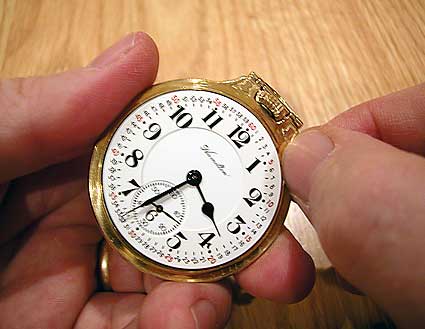By David Massengill
CHURCH SAFETY & SECURITY
“Nevertheless, we made our prayer unto our God, and set a watch against them day and night, because of them.” —Nehemiah 4:9
Nehemiah was engaged in a great work. After much prayer and fasting, and with the approval and blessing of the King, he began to see great results. Then trouble came. Enemies began to threaten and act to stop this work. Nehemiah was forced to implement measures to protect the work and God’s people.
For most ministries here in the United States, and for most of our lives, we have been fortunate to engage in the good work of building God’s kingdom without anything more than occasional ridicule or criticism. Times have changed, however. Churches are now frequently either attacked directly or are finding themselves the site of random violence. The ministry of many churches now includes daycare facilities and schools. Churches are the center of activities for individuals and families throughout the entire week. As such, they are also “soft targets” in the view of potential attackers.
Nehemiah “set a watch.” This phrase comes from a Hebrew root word meaning to “hedge about, guard, protect.” Another word frequently translated “watch” or “watchman” is one that means to “lean forward, looking; giving the picture of one who is peering as far into the distance as possible to detect danger and sound the alarm.” Read further in the book, and we find that the workers, from the least to the greatest, also utilized several strategies for their defense, including working with swords, spears, and bows in their “other hand:’ Among other things, Nehemiah utilized intelligence gathering and layering of defenses, as well as organizing communications. It is essential to act likewise. We must have those among us who answer the call to watch diligently over the work, and are prepared to protect and “hedge about” our congregation. Aren’t Christians to be a peaceful people who “turn the other cheek?” Yes, of course. We also believe, however, that self-defense and the defense of innocents is permitted, even encouraged, throughout Scripture.
Shedding innocent blood is expressly prohibited repeatedly, but God frequently allows, and sometimes commands, violence to defend His people. Luke 22 records an exchange between Jesus and His disciples to the Last Supper where He encourages them to buy a .word for protection. We must pray earnestly for divine protection, but like the story of Nehemiah and others throughout scripture, we believe the imperative is to pray and act. Nehemiah said, “we made our prayer unto our God, and set a watch…”
So where do you begin? First of all, realize two things: Ministry Safety involves more than just preparation against violent attacks. Those incidents get widespread attention, but there are threats to the congregation’s. Safety that are statistically more likely to occur. Fires, palls, medical emergencies, and parking lot mishaps are much more common, and just as important to prepare I or; so a safety plan for your church should address all these concerns as well.
Secondly, it’s a process. Resist any urge to rush into finding a Ministry Safety “package.”’ Your ministry environment is unique. Your resources are unique. The safety challenges of your ministry are constantly hanging, so your strategies and methods will vary over time. The important thing is to begin now, using what you have. Many congregations have those among them who serve or have served in law-enforcement, the fire service, EMS, or in one of many private-sector entities concerned with the safety of facilities, customers, or employees. One caution, and I offer this as a law-enforcement officer: the issue of Church Safety requires a deep understanding of ministry as well as police work. Strategies and tactics employed in the pursuit of safety just not impede ministry. Most officers have never considered this need, so be careful about allowing just anyone to focus on the former to the injury of the latter. Praying for God to give you insight, consider your ministry’s risks and vulnerabilities then explore ways to mitigate or eliminate them.
There is no “cookie-cutter” approach to a safety plan. There are, however, some common risks, or vulnerabilities, that ministries share. We can look at the history of church violence and recognize some of them. For instance, all receive offerings during service. Many have staff or volunteers who record the contributions and handle the deposits a day or so afterwards. Church “deadly-force incidents” from January 1999 through January 2014 reveal that in cases where the motive was known, robbery accounted for 24% of them. The same data also shows that approximately 60% of these incidents occurred when no event was taking place at the church. Access control is essential, but often neglected until tragedy strikes. Domestic situations and personal conflicts rank numbers 2 and 3 on the list. You must have a strategy in place for such risks.
A church providing educational facilities, especially, multiplies their risk exposure many times over. Safety planning must be intentional. Consider the need prayerfully and, like Nehemiah, take action today to protect your ministry.
David Massengill serves as the Crime Prevention Officer at an East IN Sheriff’s Department, and is Director of Ministry Safety at Eagle Bend Apostolic Church in Clinton, TN
The above article, “Set a Watch” is written by David Massengill.
The material is copyrighted and should not be reprinted under any other name or author. However, this material may be freely used for personal study or research purposes.


